I try to write my posts as unbiased as possible and recommend the products I consider to be useful and the best. I use affiliate links, this means that–at no extra cost to you–I can make a commission on a purchase you make after clicking on them. As an Amazon Associate I earn from qualifying purchases.
Training Your Dog to Leave it:
Step-by-Step Guide
Training your dog to Leave it is one of the most useful cues to teach your dog. It gives you a way to communicate with your pet, it makes him better at impulse control and it's fun to train too! With this cue you can tell your dog to not pick a piece of food from the floor, stay away from something you dropped and even use it to tell your dog to leave another dog or person.
Scientist describe "inhibitory control" as the collection of cognitive processes necessary to refrain from an impulsive behavior during inappropriate situations. Usually, being able to refrain from our impulses in inappropriate behaviors results in a more advantages alternative behavior.
Trainers call this concept "Impulse control" or “Self-control” to put it in simpler terms. Imagine you put some food on the table and left to go grab something you forgot. Your dog sees the food on the table, can he suppress his natural behavioral response and leave-it?
Many dogs can’t and will most likely steal the food. Some dogs, probably because of a training history, may be able to control their urge and leave the food intact. A new research study suggests that dogs that have had previous extensive training are better at this than dogs that have had little or not training. Training your dog to Leave-it can improve your dog's self-control!
Training your dog to Leave it Tips!
- The following articles will greatly help you understand the process of training your dog to leave it: 1) Marker Word, 2) How to get a reliable dog command, 3) Training your dog to sit.
- You do not need to train your dog all the way to the last level. It is completely up to you how reliable you want the command to be.
- There is a lot of repetition involved in training, this is very important. Only skip it if you feel your furry friend is ready. Go back to previous steps if your dog is not getting it! (it is not his fault, just needs more practice!).
- You can mix steps 7-10 however you want to. This could be useful to spice up training sessions.
- Be creative with the use of rewards. Food, toys, games, petting and more.
- To cut the amount of treats you use for training, use part of his regular food.
6 Steps to training your dog to leave it
Step 1: Get your dog to leave it
Try not to use the word "leave-it" during the first few trials. You first want your pet to understand what he is supposed to be doing before you label it.
Reward your dog for every single correct response at this point. We will cut back on treats later on.
To start training your dog to leave it, we will use the dog training method capturing. This method lets the dog make his/her own decisions, you just reward the correct one.
Find a quiet room in your house with minimal distractions. We want to start easy and help your hound succeed. Remember, in order for your pet to understand and learn he must succeed many times. Make the exercise easy and increase the difficulty level slowly. This will help him accomplish the behavior faster!
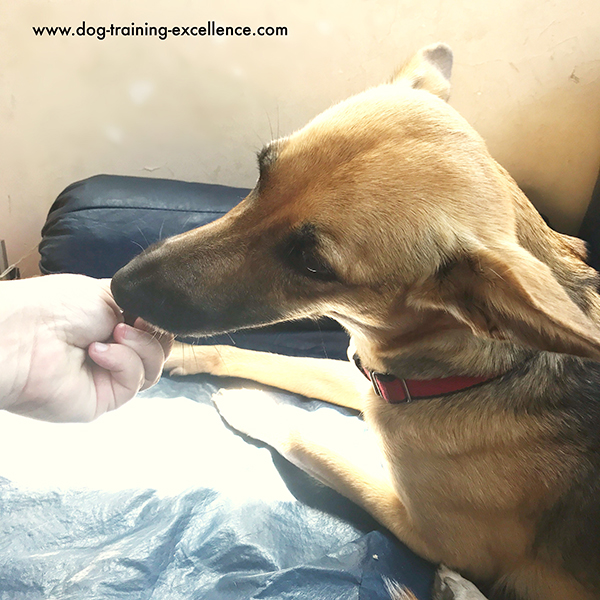 Step 1: offer some food with your hand closed, let your dog sniff and nibble but do not give the treat.
Step 1: offer some food with your hand closed, let your dog sniff and nibble but do not give the treat.Start training your dog to leave it by tempting him with a piece of yummy food from your hand, but keep your hand closed.
Your canine friend
will most likely try very hard to get to it. He might lick your hand, bite and nibble at it, paw at your hand, bark. Ignore it all!
As soon as your dog "gives-up" and either looks away or moves away from your hand, Mark and Reward! (or click and treat!). Mark and Reward, should be all done in less than 2 seconds following his behavior (which was looking away or making eye contact with you).
Note: The reward can be the same piece
of treat you were withholding or it could be a different one coming out
of the treat bag. I recommend alternating between these two methods so
your furry friend understands that he won't always get to keep what he
ignored.
Repeat until your dog starts doing it faster, almost anticipating that he has to look away to get the treat! Your dog may not even approach your hand anymore, this means you are ready to move on to the next step.
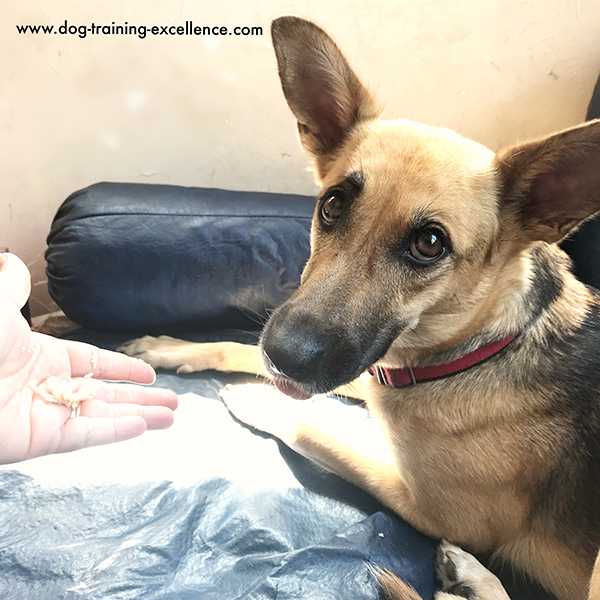 When your dog looks away, or moves away from the food - Praise and Reward!
NOTE: For the pictures my dog is down, but I would practice this with the dog standing up.
When your dog looks away, or moves away from the food - Praise and Reward!
NOTE: For the pictures my dog is down, but I would practice this with the dog standing up.Step 2: Strengthen the command
In the previous step, you dog simply learned to avoid your closed hand. Now, we are going to teach him to leave-it even if you hand is opened.
Start as in step 1, offer your hand with a treat inside to your dog, if he moves away (or doesn't even approach) open your hand. Most likely, your dog will move forward to take the treat. CLOSE YOUR HAND! As soon as he moves away, open you hand again.
Imagine there is an invisible string attached from your dog's mouth to your fingertips. If your dog moves away, your hand opens, if your dog moves forward, your hand closes. Eventually, your dog will figure out that if he stays away, your hand will remain open.
When you open your hand (with the treat inside) and your dog does NOT move forward...looks at the treat...but does not try to get it. PRAISE AND REWARD!
Repeat until your dog can stay put when you offer a treat with your opened hand.
Step 3: Adding the verbal cue "Leave-it"
To continue training your dog to leave it, repeat Step 2 but now start saying the command "Leave-it" before or as you offer your hand (with a treat inside).
The idea is to start using the command "leave-it" before he acts. He doesn't understand the word yet, but many repetitions will create an association between the cue "Leave-it" and the desired behavior (the dog to not steal the food from your hand).
The words "leave-it" will predict that you are going to block the food on the floor and your dog might stop. The word MUST always come first, to have a predictive value.
Step 4: Fade the body block away and add difficulties
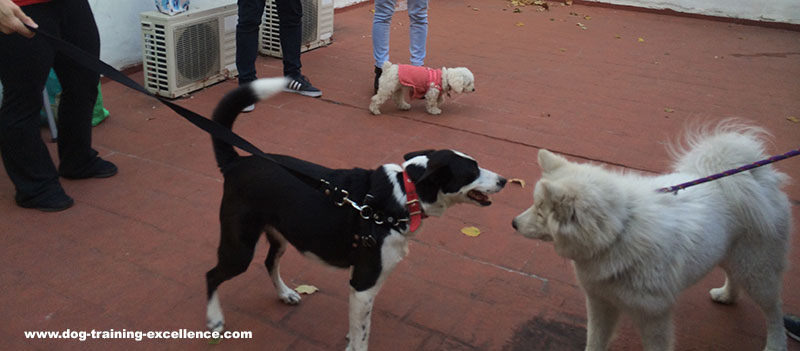 You can help your dog generalize the concept of "Leave-it" by using it with other things that are not food, for example dogs.
You can help your dog generalize the concept of "Leave-it" by using it with other things that are not food, for example dogs.So far, you have taught your dog to leave a treat inside your hand. This will not translate to more difficult situations, so in training your dog to leave it, you must add different challenges for your dog to get better at this. Here are a few ideas for training your dog to leave it:
- Place the food on the floor and cover it with your hands. Repeat steps 1-3. Now that the food is on the floor and your dog can leave-it, add distance. Move away from the food (one step at a time) and reward your dog for leaving it even when you are a little further away. Also, try to fade away the block with your hand. Just leave the food on the floor, say "leave-it" and reward for good behavior.
- Place the food on the table and cover it with your hands. Repeat steps 1-3. Again, you can add distance and duration (ask your dog to wait longer and longer before you reward).
- Practice with distractions around, like other dogs, kids playing, people eating, etc.
- Say random words, your dog may think you said (Good boy!) and want to get the treat, block it. Reward if he waits to hear the correct word.
- Ask your dog to do something else before getting a treat. Before rewarding, ask your dog to sit or lay down, then praise and reward.
The more challenges you practice with your pet, the better he will get at this exercise.
When training your dog to leave it you start by rewarding every single correct response. Now, we need to teach your dog the concept that he won't be getting a reward for every single good response. This must be done gradually or your puppy will give up!
Randomly ignore a few good responses (do not give a treat but say your marker word or click). Start by missing one treat out of ten, then 2, then 3. Do not go below 70% or your dog might give up. If you stay at 7 treats out 10 good responses, you will be doing great!
Will you always need treats?
A reliable response to your commands needs to be rewarded often! But because you will be doing it only half of the time and randomly, your pet will ALSO respond when you do not have treats! That is the beauty of positive reinforcement!
Step 5: Change the situation!
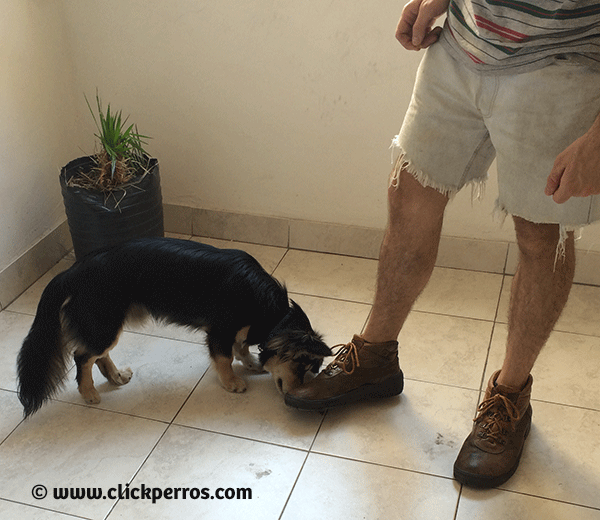 Pope tries to get the treat from under the shoe, he will eventually give up - That's when you let him have it!
Pope tries to get the treat from under the shoe, he will eventually give up - That's when you let him have it!We have been working with placing food on different surfaces and blocking it with our hand. This has some limitations. Now, try dropping the food on the floor and blocking with your foot. Repeat steps 1-4 but pretending food falls on the floor.
This may seem silly, but for your dog, placing food on a surface and dropping food are two very different situations, you must practice them both.
Now that we are working with tossing food, in step 4, you can add even more challenges:
- Practice while walking not just standing in one place.
- Practice tossing the treat further and further away.
- Use toys instead of food.
- Use a person instead of food (as in, "Leave that person alone").
- Be creative when training your dog to leave it!
Step 6: The "Touch/Leave-it" and "Take-it/Leave-it" Games
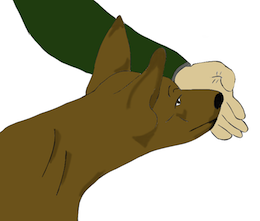
Teach your dog target training, this is when you teach your dog to touch your hand with his nose. It's the complete opposite of training your dog to leave it. Once your dog can do "Touch" and "Leave-it" in different sessions, start mixing them up in the same session. Now your pet must pay attention to you words and act accordingly!
Then, teach your dog to grab something with this mouth, the "Take-it" cue. Mix and match what he has to do: leave-it, touch or take it!
These games will help your dog better understand the different between the cues.
Step 7: Training your dog to leave it, make it real!
It is time to take the reality test!
Can your pet respond to your command on a real situation?
While you are out for a walk try the command leave-it. In the beginning I suggest you try it on something that he is likely to succeed on. Then try it on a squirrel! If he stops in his tracks….You did it!
If not, just keep practicing. You will get there if you are consistent and give your pet lots of opportunities to succeed!
You can use the command leave-it for many things, not just items that are on the floor. Does your dog like to chase your cat? Is he pushy with other dogs? Does he pull on the leash whenever he sees something he wants to go after? Try using leave-it to let your hound know that he must stop doing it! Tell us how training your dog to leave it worked for you!
Don't forget to tell us your story or share your comments and questions on the box below!
More articles you may like:
|
|
Teach your dog to come when called
One of the most important dog training commands to practice with your pooch! Learn how to train it here... |
|
|
Have you tried clicker training?
Learn all about it and start clicker training your dog today! |
Teach your dog to LOVE all of his toys!
Learn how to make your dog love all of his toys with this dog trainer's hack... |
Home > Dog Training Commands > Training your dog to leave-it
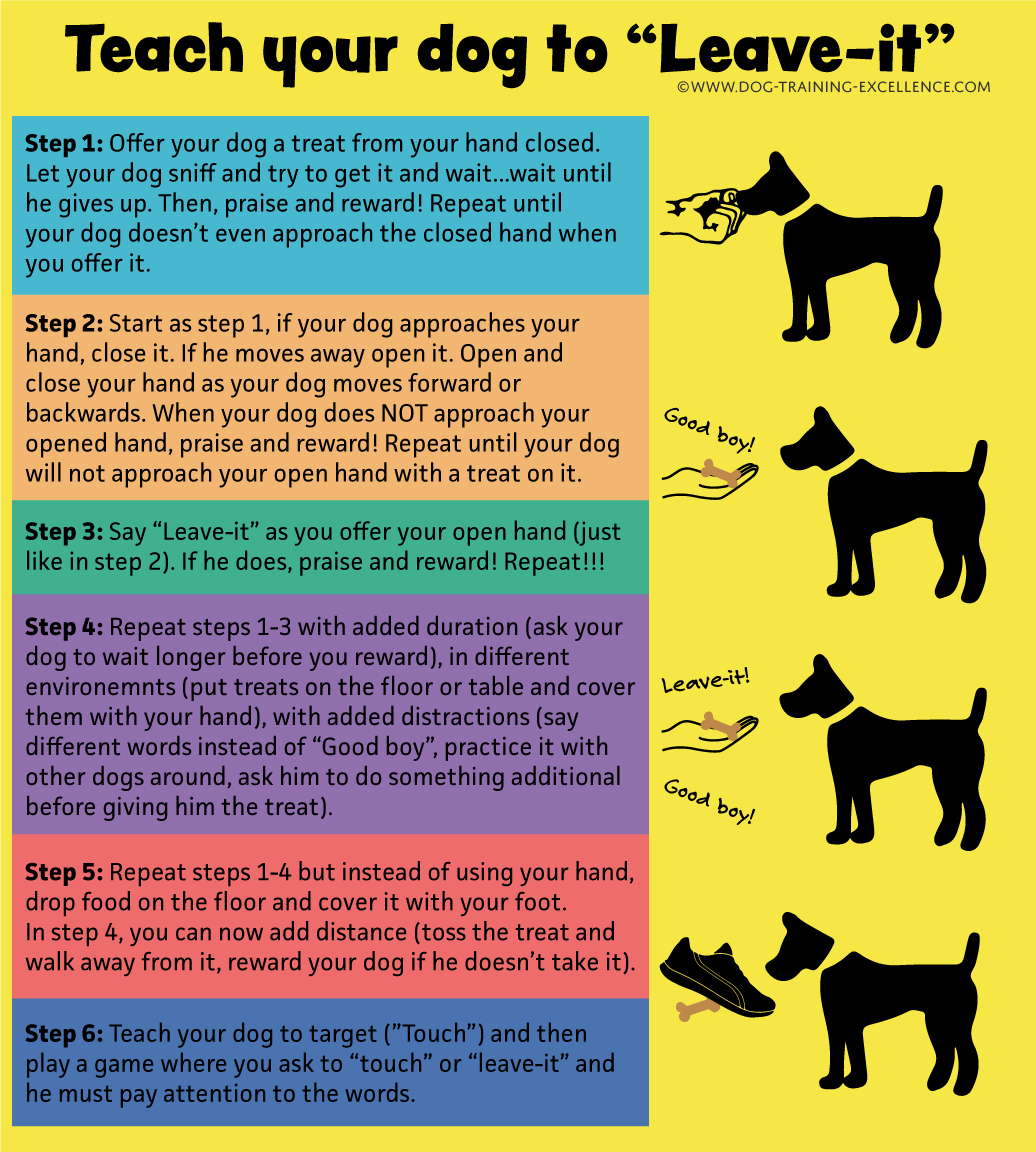
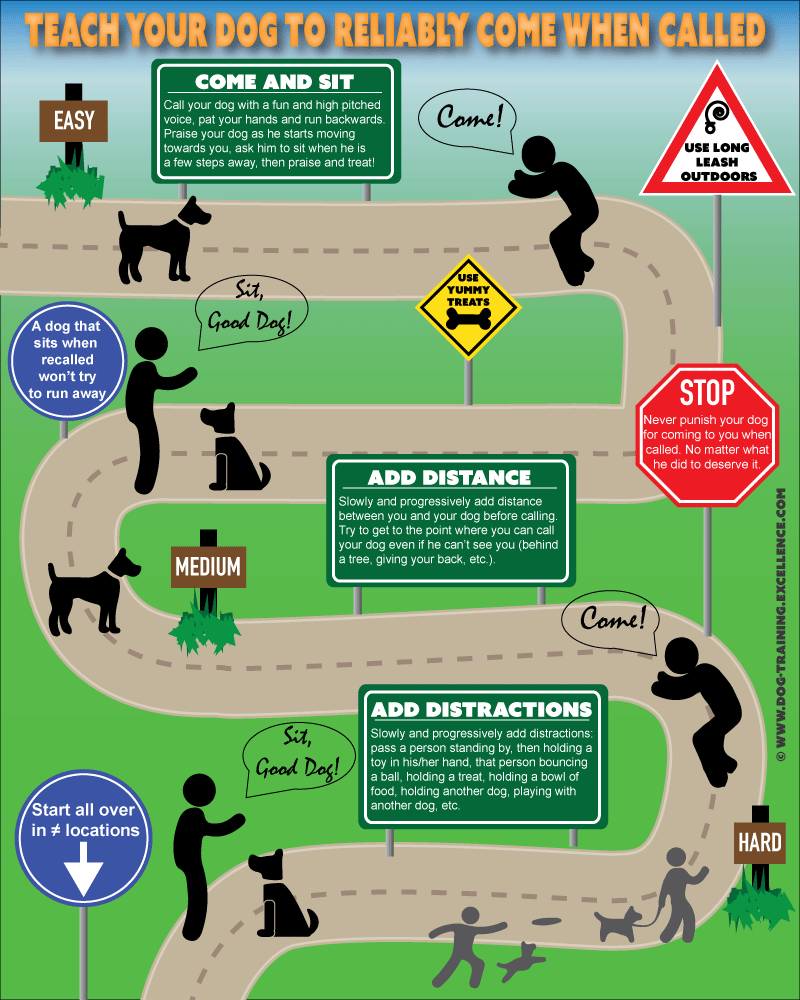
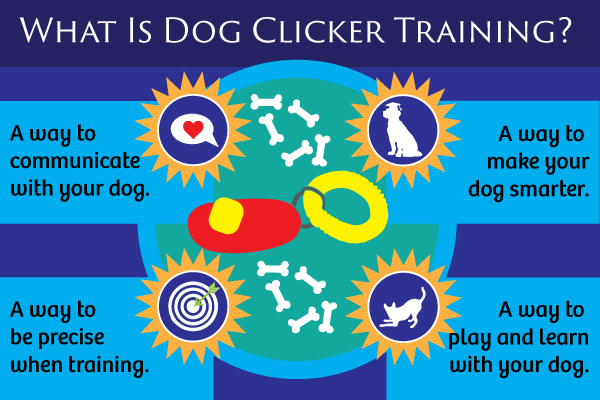
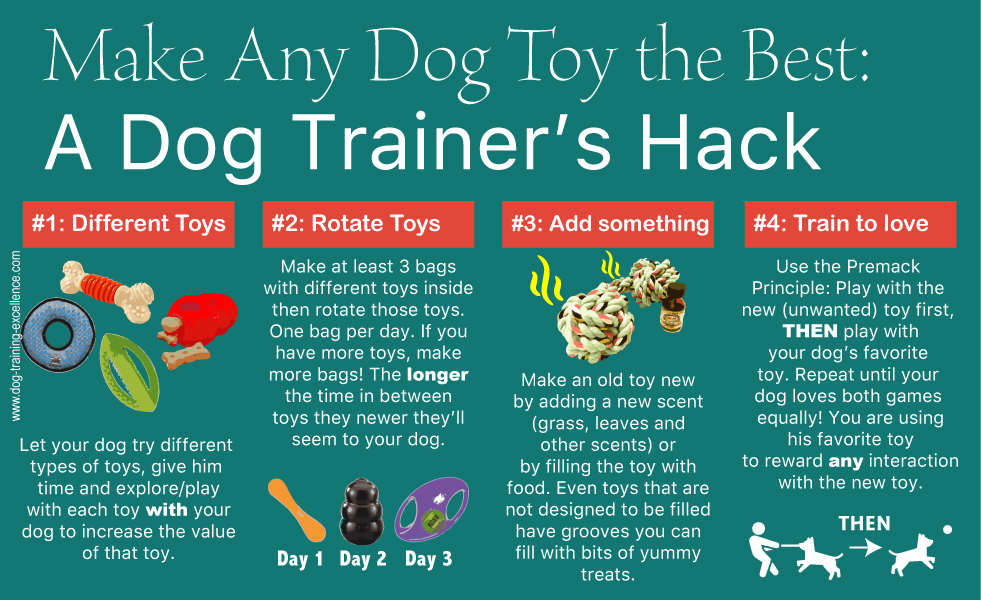

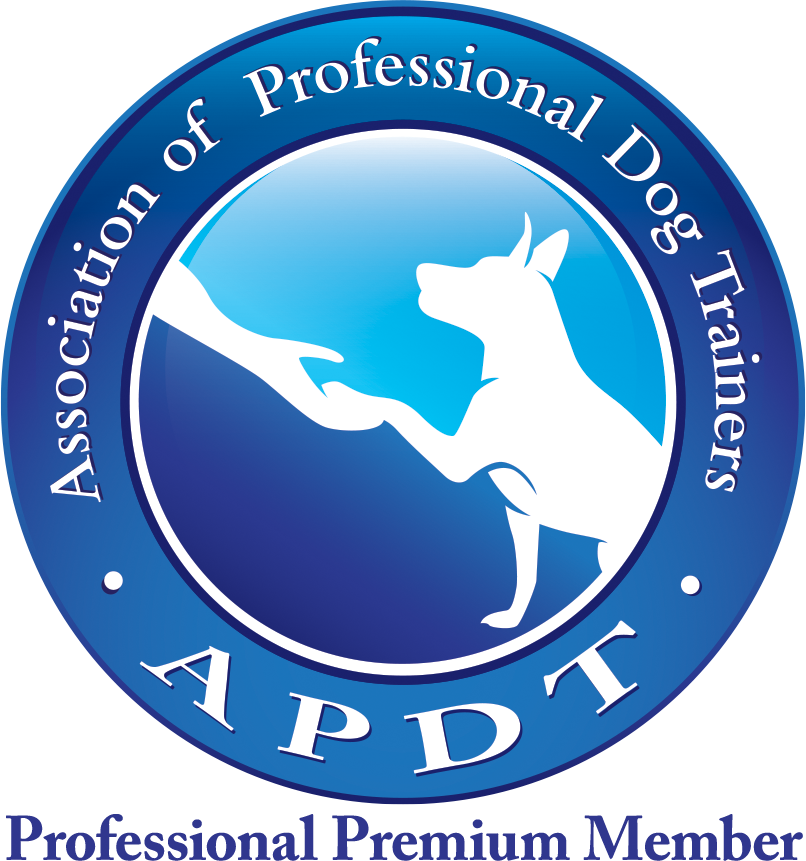


New! Comments
Questions? Anecdotes? Tips? Leave me a comment in the box below.